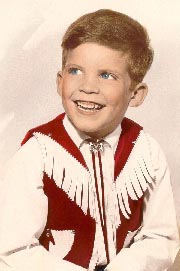A check-in on the Banjo versus TV project — J.R.'s ongoing plan to spend more time on his banjo than on TV. This post covers 5/24/2009 through 5/30/2009.

I've been pretty fixated all week long with the Land of the Lost movie that came out on Friday. Maybe it's because of the banjo music in the original series.
I was wondering who played the banjo on that show. Here's where Google lead me:
- Jimmie Haskell was the composer for Land of the Lost.
- A Owsley had an interview with Jimmie Haskell in which Haskell says, "I had a great banjo player, Larry McNeely."
- The Banjo Hangout has a whatever-happened-to discussion about Larry McNeely.
When the Land of the Lost: The Complete Series DVD set came out on Tuesday I was first in line to get in (because: of couse!) and I was happy to see a DVD extra of film director Brad Silberling interviewing Sid and Marty Krofft. Here's the banjo-centric portion of the interview:
Brad: Okay, I'm going in right away with the big question. What is with the banjo? Tell me about the banjo. It's the most brilliant and interesting and odd choice for a key instrument, for a theme song, as a recurring instrument, for your underscore. I'm stealing it for my movie.
Sid: Well, I really think it was like two years before we did Land of the Lost, there was a big movie out there with Burt Reynolds.
Brad: Ah, yes, we know that movie.
All: Deliverance.
Sid: And Deliverance had a banjo all the way through it. So when we were scoring Land of the Lost, I said to the composer, "I love that sound. Let's try that to see if it works with the dinosaurs.". And Marty and myself really insisted upon... He saw the movie too and he said, "Wow, that's an incredible sound, so let's go for it." And it really, really worked.
Brad: Science fiction, adventure, banjo. Yeah. Absolutely.
Also in the last week:
- My watch-in-the-morning DVD has been Bill & Gloria Gaither Present: Country Bluegrass Homecoming: Vol. 1, which I rented from Netflix. Good DVD, although truth in titling should have required it be called Bill & Gloria Gaither Present: A Whole Bunch of Artists Sing One Gospel Song Each, Some of Which is Bluegrass: Vol. 1.
- All that gospel bluegrass stuff put me in mind of the Austin Lounge Lizards singing Banjo Players in Heaven. Growing up with a dad who was a church musician with a sense of humor, I developed a taste for slightly irreverent gospel music.
Emily Kaitz also sings this song, with some additional lyrics.
- Some stuff from my daily reading at comics.com:















